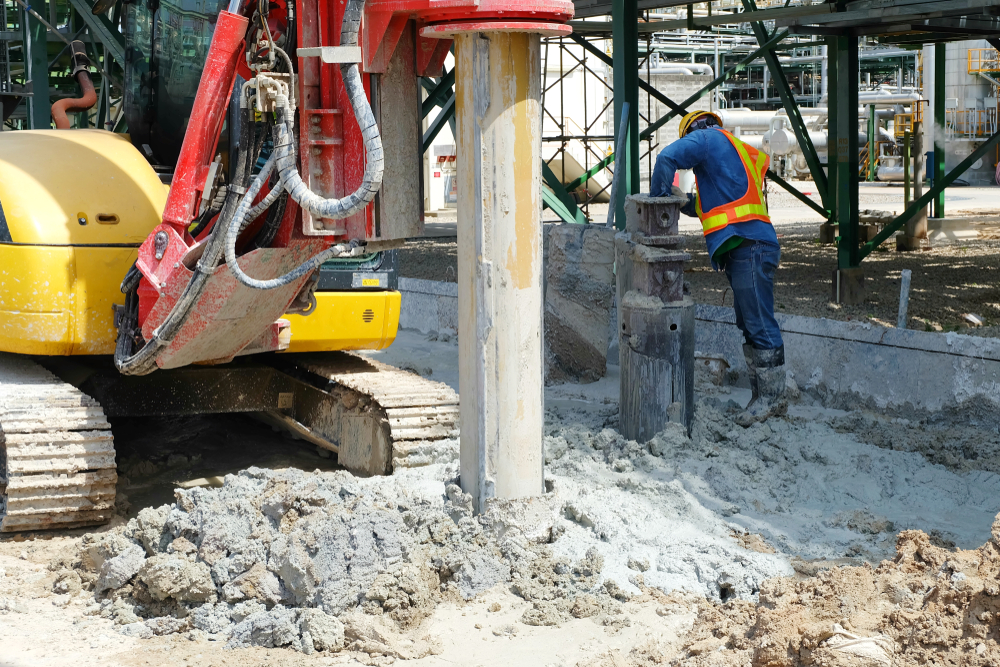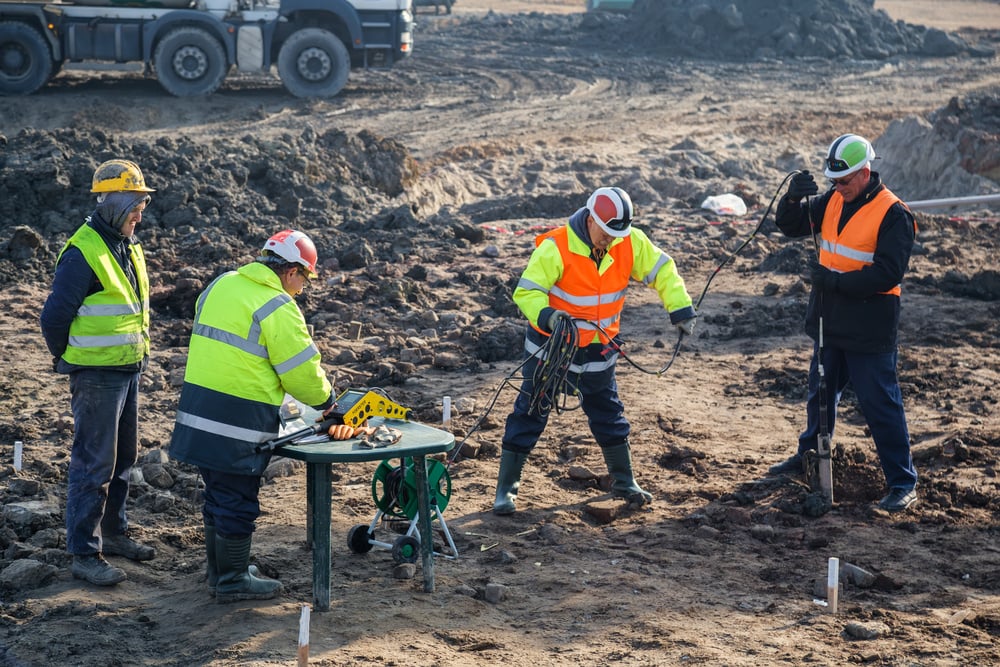Some Ideas on Geotechnical Engineering For Construction Projects You Need To Know
Some Ideas on Geotechnical Engineering For Construction Projects You Need To Know
Blog Article
Get This Report about Geotechnical Engineering For Construction Projects
Table of ContentsGeotechnical Engineering For Construction Projects for DummiesWhat Does Geotechnical Engineering For Construction Projects Mean?The Of Geotechnical Engineering For Construction ProjectsGeotechnical Engineering For Construction Projects Things To Know Before You BuyGeotechnical Engineering For Construction Projects Fundamentals ExplainedTop Guidelines Of Geotechnical Engineering For Construction Projects
These attributes need to be checked out by geotechnical engineers to anticipate their motions under various conditions., making this analysis necessary.A geotechnical designer will check out soil to determine the bearing capability of the earth and advise appropriate structure kinds, such as shallow structures, deep foundations like heaps, or specialized services like drifting structures for soft soils. Comprehending the functions and activities of soil and rock, along with how they connect with buildings that have been erected on or within them, is one of the key descriptions for why geotechnical design is essential.
Ecological defense is accomplished through geotechnical engineering. Experience in air, water, and dirt top quality upkeep is placed to make use of by geotechnical designers to decrease the adverse results of projects.
To sum up, geotechnical engineering is an essential self-control that preserves the resilience and honesty of civil framework. Geotechnical engineers contribute to making structure jobs efficient all over the globe by understanding the practices of planet materials and applying ideal preparation approaches.
The Ultimate Guide To Geotechnical Engineering For Construction Projects
The fundamental stability of any type of job is crucial. Geotechnical engineering plays an essential role in making sure that frameworks are improved solid ground, literally and figuratively. By checking out dirt, rock, and subsurface problems, geotechnical engineers give vital understandings that help in the layout, building, and maintenance of structures and infrastructure.

The 7-Minute Rule for Geotechnical Engineering For Construction Projects
Laboratory testing: Establishing the buildings of dirt and rock. Several high-profile building and construction jobs have actually effectively utilized geotechnical design to ensure their security and security.

As a leader in geotechnical engineering, BECC Inc. is dedicated to supplying ingenious and effective remedies that fulfill the greatest standards of top quality and security. For more information on how BECC Inc. can sustain your next building and construction job, call us today and allow us aid you construct on strong ground.
William Rankine, an engineer and physicist, created a different to Coulomb's earth stress concept. Albert Atterberg created the clay uniformity indices that are still used today for dirt classification. In 1885, Osborne Reynolds identified that shearing reasons volumetric expansion of thick products and contraction of loose granular materials. Modern geotechnical design is claimed to have started in 1925 with the publication of Erdbaumechanik by Karl von Terzaghi, a mechanical designer and geologist.
3 Easy Facts About Geotechnical Engineering For Construction Projects Described
Terzaghi likewise established the framework for concepts of bearing ability of structures, and the concept for forecast of the price of negotiation of clay layers due to loan consolidation. After that, Maurice Biot totally created the three-dimensional dirt loan consolidation theory, prolonging the one-dimensional design formerly developed by Terzaghi view it now to a lot more general hypotheses and introducing the collection of standard formulas of Poroelasticity.
Geotechnical designers check out and determine the homes of subsurface conditions and materials. They also create matching earthworks and keeping structures, passages, and framework foundations, and might manage and examine websites, which might additionally include website surveillance in addition to the risk assessment and mitigation of natural hazards - Geotechnical Engineering for Construction Projects. Geotechnical designers and design geologists carry out geotechnical investigations to get information on the physical properties of dirt and rock underlying and adjacent to a site to make earthworks and structures for recommended structures and for the repair of distress to earthworks and frameworks triggered by subsurface problems.
More About Geotechnical Engineering For Construction Projects
Still, they are sometimes used to enable a geologist or engineer to be decreased right Home Page into the borehole for straight visual and manual exam of the dirt and rock stratigraphy. Numerous soil samplers exist to meet the needs of various design tasks. The basic penetration examination, which makes use of a thick-walled split spoon sampler, is the most typical method to collect disturbed examples.

Commonly, the user interface's precise geometry is unknown, and a simplified user interface geometry is presumed. Finite inclines require three-dimensional versions to be examined, so most slopes are examined assuming that they are definitely broad and can i was reading this be stood for by two-dimensional designs.
Some Known Facts About Geotechnical Engineering For Construction Projects.
Creating the style based on a working hypothesis of actions prepared for under the most possible problems. Selection of amounts to be observed as building and construction profits and computing their prepared for worths based on the working hypothesis under the most negative conditions.
Dimension of quantities and examination of actual problems. It is unsuitable for projects whose layout can not be modified during building and construction.
Report this page